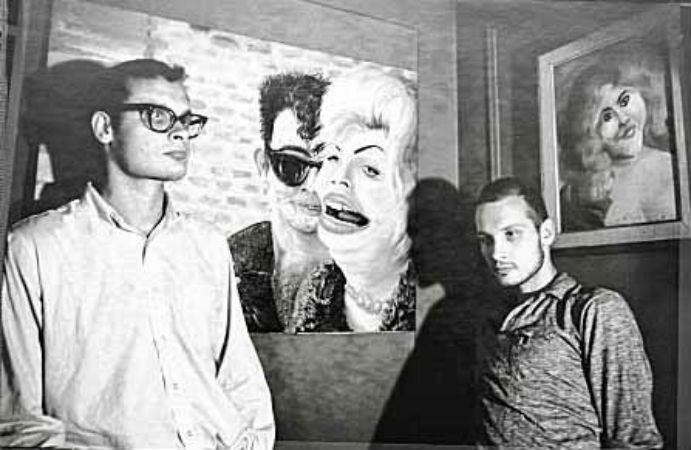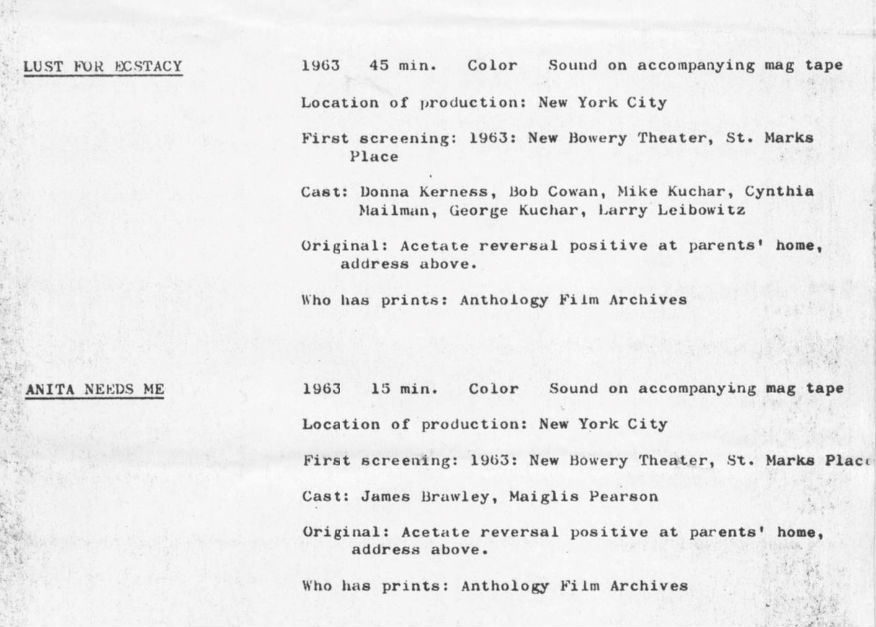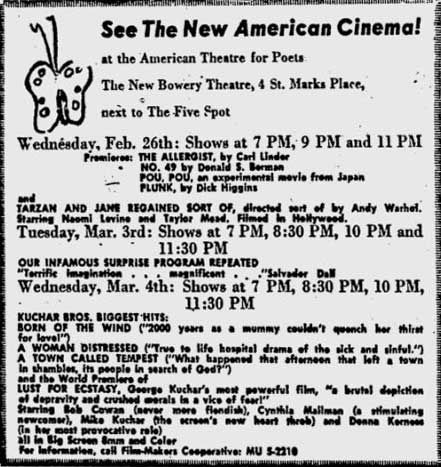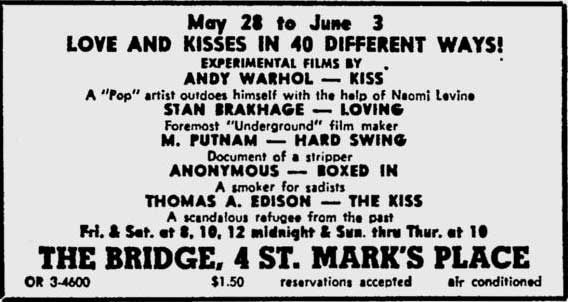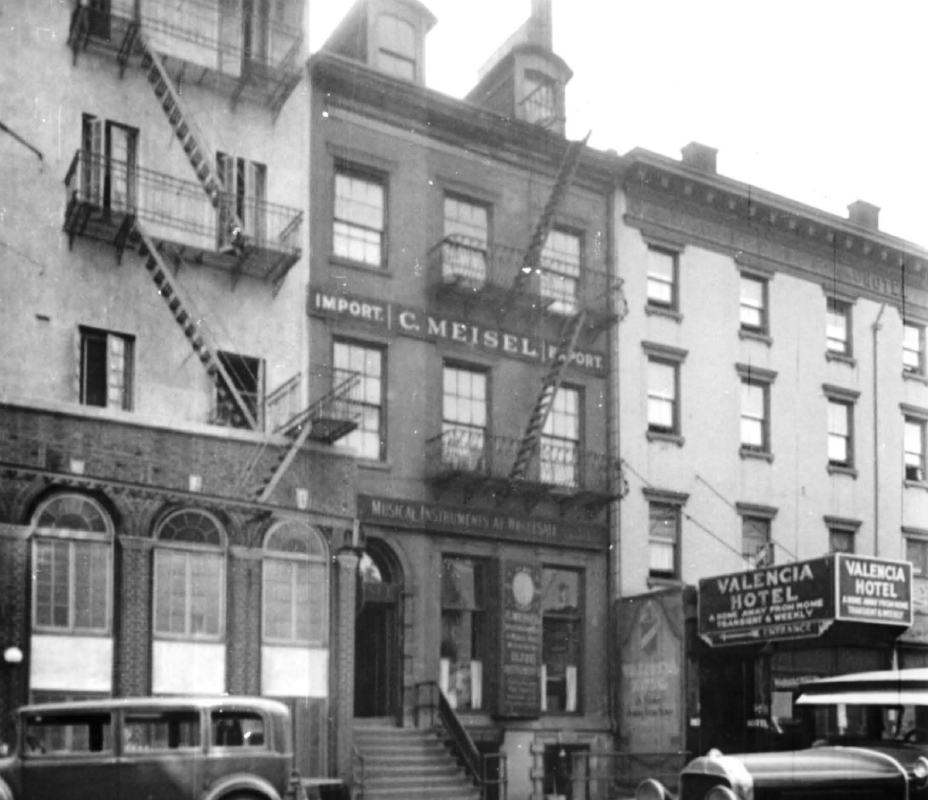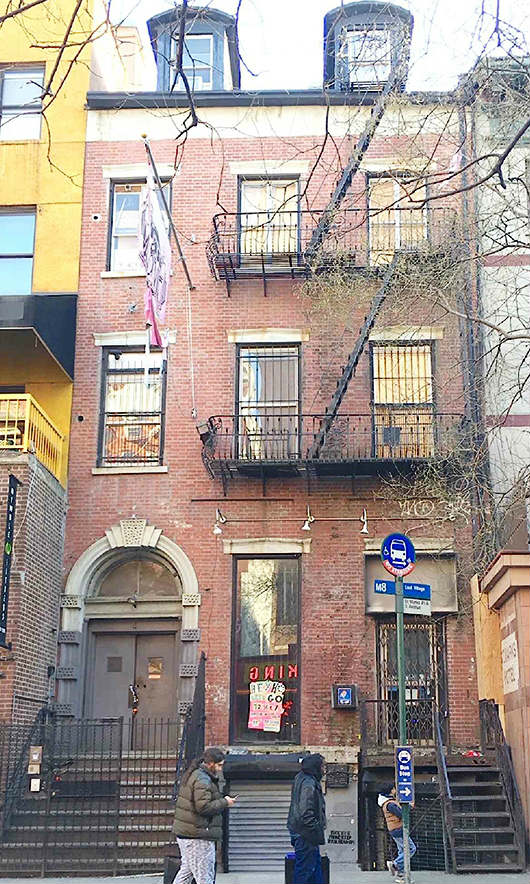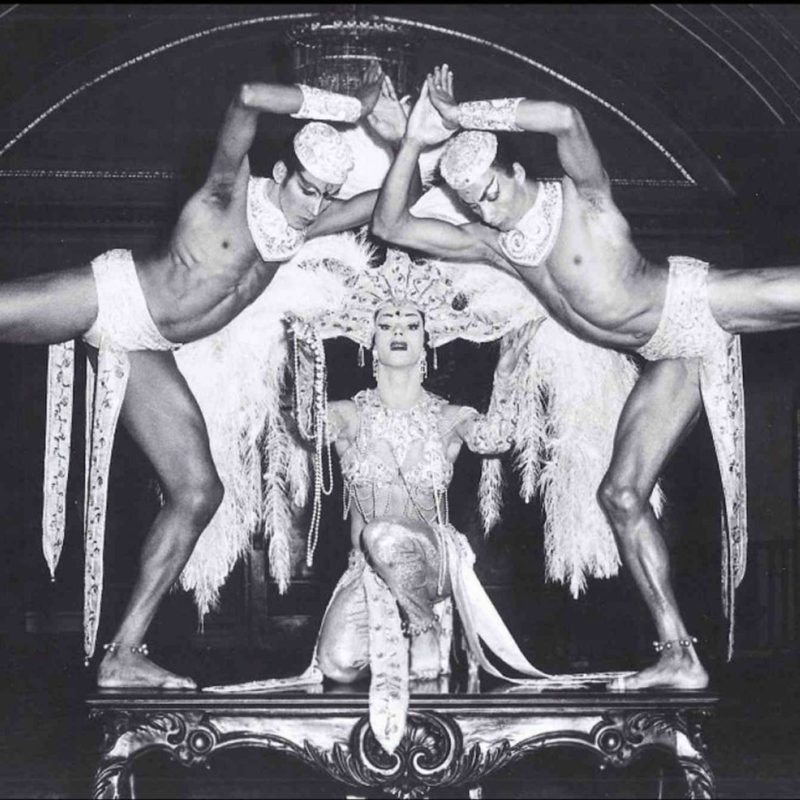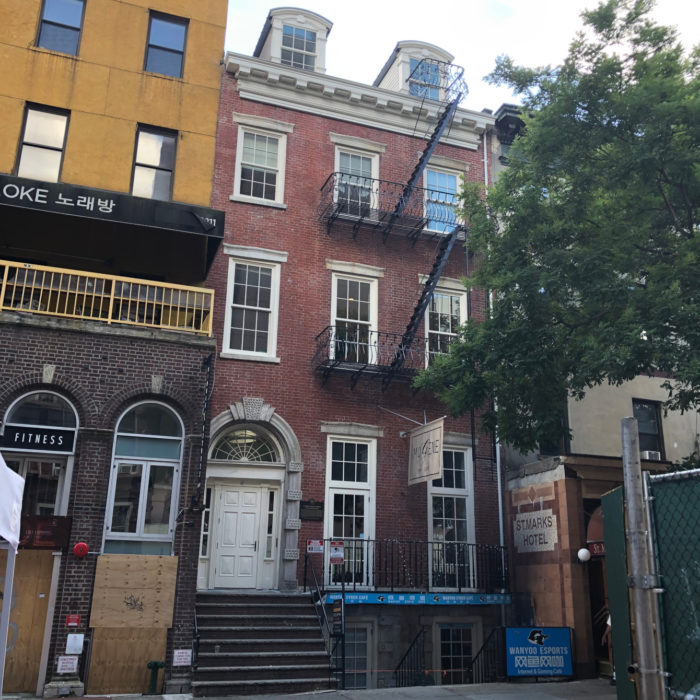
Tempo Playhouse / Key Theater / New Bowery Theater / Bridge Theater
overview
This 1831 house had a significant and colorful Off-Off-Broadway theatrical history from 1955 to 1967, reflecting its location on St. Mark’s Place during the cultural ascendancy of the East Village.
Among other uses, it was the Tempo Playhouse, Key Theater, New Bowery Theater, and Bridge Theater, noted venues for experimental theater, contemporary music and dance, and early underground films with a number of LGBT associations. These venues suffered official harassment.
History
After the 1804 death by duel of the first U.S. Secretary of the Treasury, Alexander Hamilton, his widow, Elizabeth Schuyler Hamilton, was left destitute with a large family. In 1833, she lost their home Hamilton Grange, which was swapped for this newly constructed rowhouse. The English-born real estate developer Thomas E. Davis, who acquired the Grange, had constructed both sides of the block of St. Mark’s Place between Third and Second Avenues in 1831 as an elite enclave. No. 4 was the home of Elizabeth Hamilton and various family members until 1842.
The building had a significant Off-Off-Broadway theatrical history with a number of LGBT associations from 1955 to 1967, reflecting its location on St. Mark’s Place during the cultural ascendancy of the East Village. Actress-manager Julie Bovasso established and directed the non-profit Tempo Playhouse here in 1955, where she is credited with the American premiere of Jean Genet’s The Maids. Also produced here were Gertrude Stein’s In a Garden and Three Sisters Who Are Not Sisters. The first Obie Awards, given for Off-Broadway theater by the fledgling Village Voice in 1955-56, recognized Bovasso as best actress in The Maids and, in a special citation, the Tempo as best experimental theater. In 1959, what was then known as the Key Theater played Federico Garcia Lorca’s The Virgin, the Sailor, and the Student/ Chimera.
As the New Bowery Theater in 1964, it became a venue for showing early avant-garde “underground” films by the Film-Makers’ Cooperative under Jonas Mekas, then film critic of the Village Voice and editor-publisher of Film Culture magazine. The work of brothers George Kuchar and Mike Kuchar was introduced here, including their premiere of Lust for Ecstasy (1963) and George Kuchar’s Corruption of the Damned (1965). The district attorney’s office raided the theater, seizing Jack Smith’s allegedly “obscene” film Flaming Creatures and arresting Mekas.
In 1965-66, the building housed the eclectic Bridge Theater, a significant downtown venue for contemporary dance, in a program called “Dance at the Bridge.” Among the noted dancers and choreographers whose work was performed here were Lucinda Childs, Yvonne Rainer, Meredith Monk, and Kenneth King, many of whom were associated with Judson Memorial Church’s experimental dance program and with Merce Cunningham. Their performances were reviewed by the New York Times and Dance magazine. The theater operators were brought before the Department of Licenses in 1966 for various petty violations, but mainly for the burning of an American flag in “LBJ,” an anti-Vietnam War skit, during a benefit. The theater was charged with “a show … that was immoral, indecent and against the public welfare” and with “not obtain[ing] an open flame permit.” A committee of artists and writers, headed by poet Allen Ginsberg, held a press conference at the theater and denounced “petty officials … [who were] conducting a campaign of harassment to drive avant garde artistic endeavors out of the city.” The charges were ultimately dropped, but the building’s use as a theater ended.
Entry by Jay Shockley, project director (September 2018).
NOTE: Names above in bold indicate LGBT people.
Building Information
- Architect or Builder: Unknown
- Year Built: 1831
Sources
Jay Shockley, Hamilton-Holly House Designation Report (New York: Landmarks Preservation Commission, 2004).
Do you have more information about this site?
This project is enriched by your participation! Do you have your own images of this site? Or a story to share? Would you like to suggest a different historic site?


